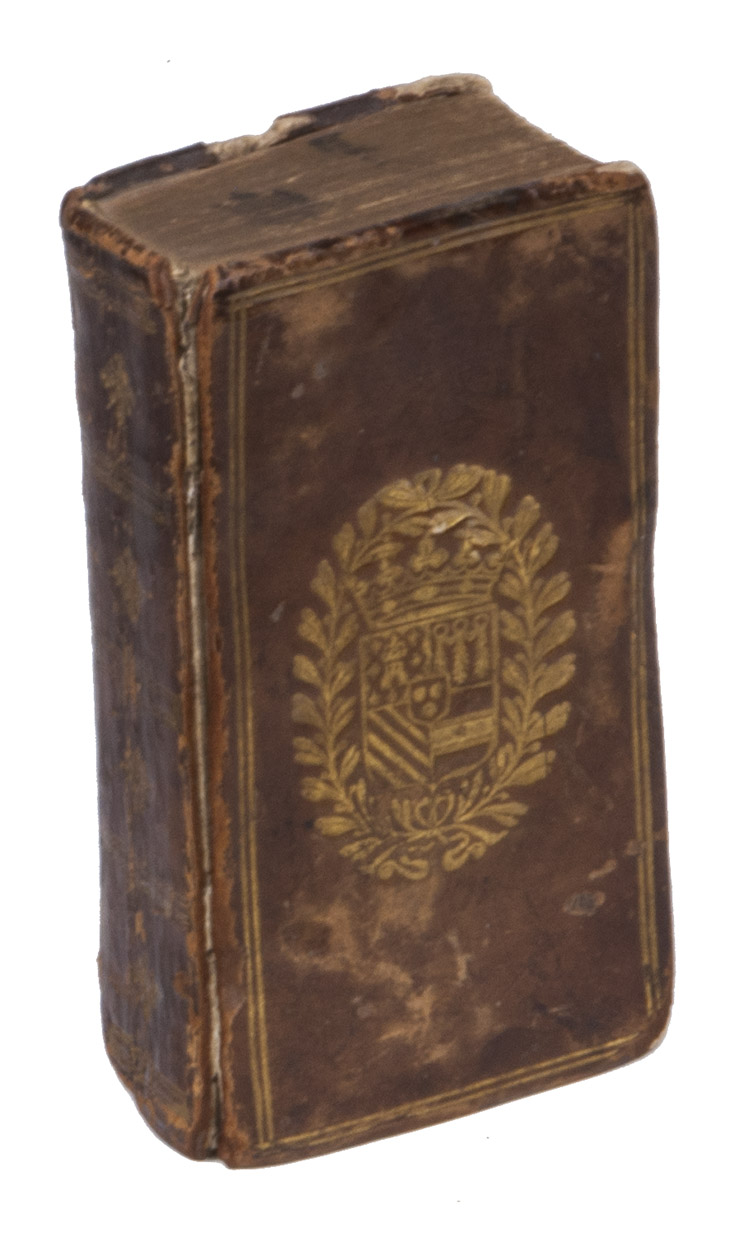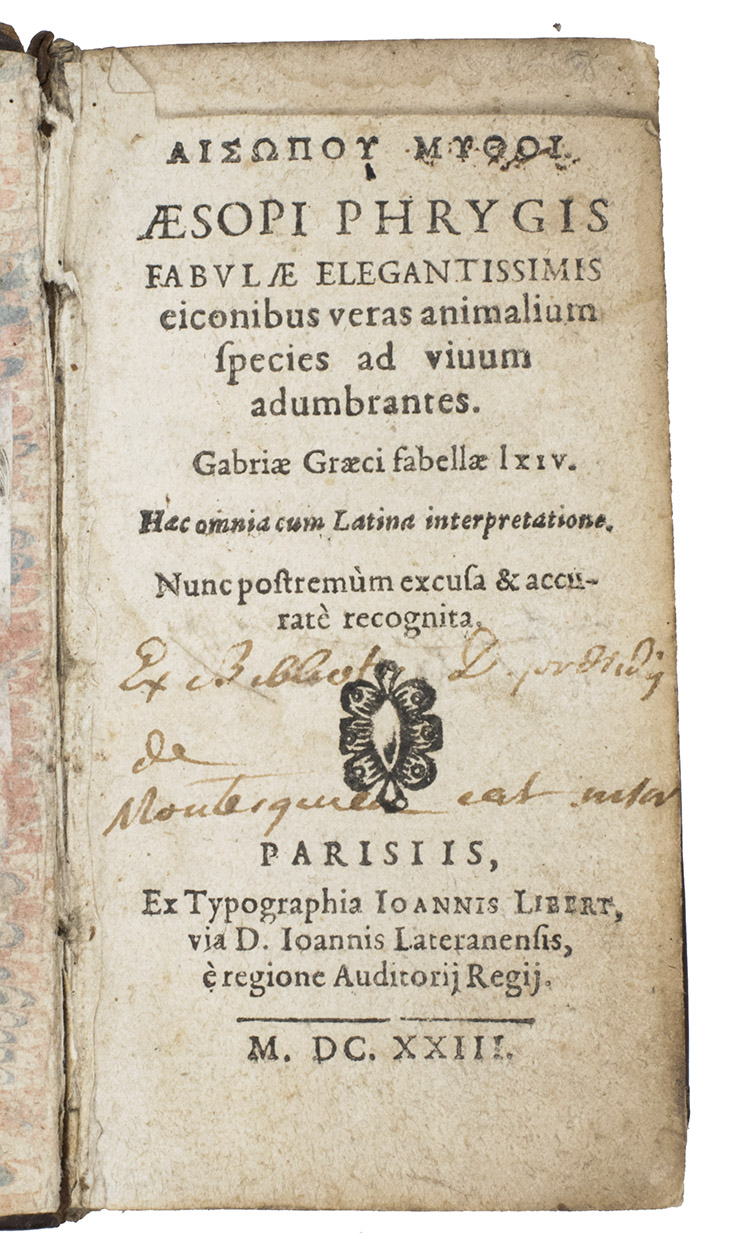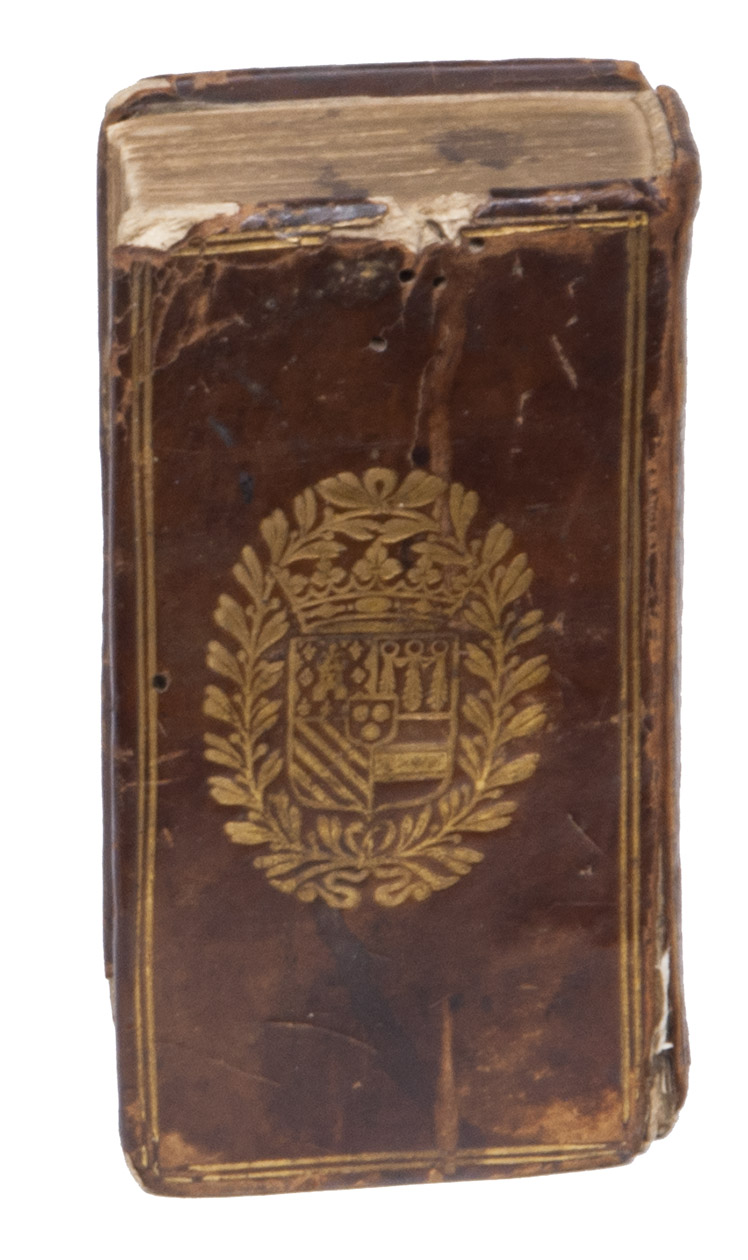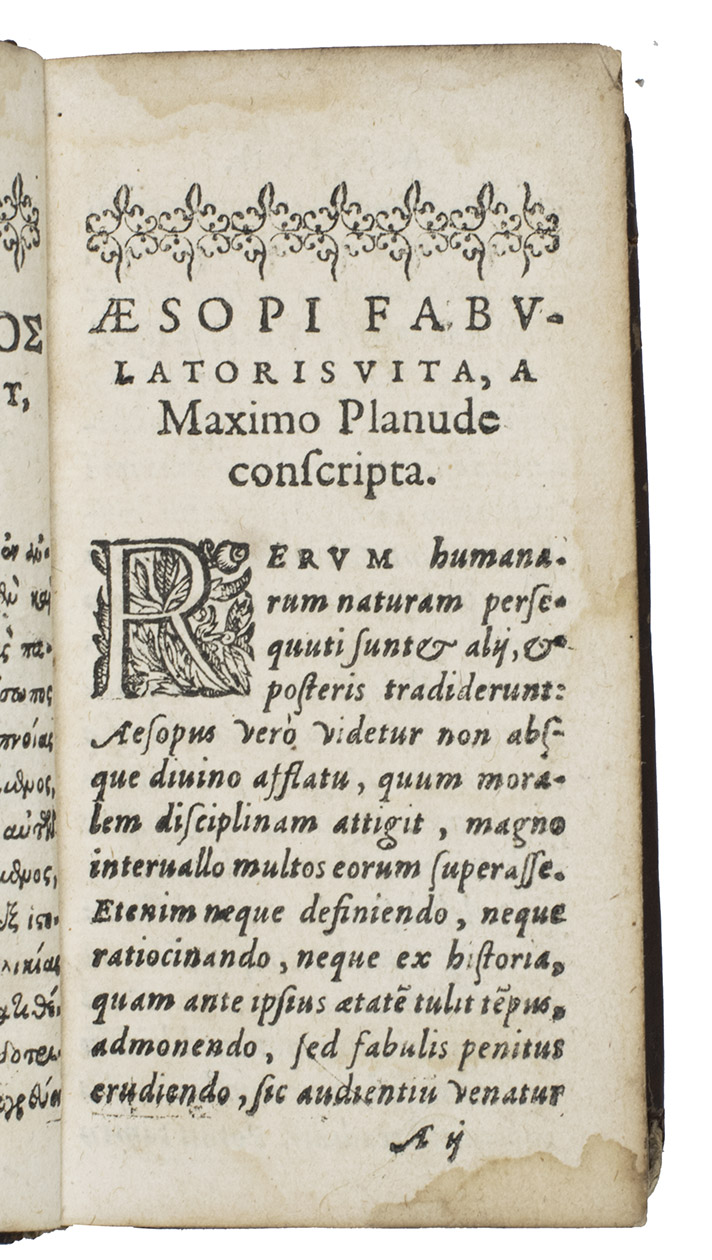AESOP & BABRIUS.
Aesopi Phrygis fabulae elegantissimis eiconibus veras animalium species ad vivum adumbrantes. Gabriae Graeci fabellae lxiv [recté lxiii]. Haec omnia cum Latina interpretatione. Nunc postremùm excusa & accuratè recognita.
Paris, Jean Libert, 1623. 16mo. Contemporary French gold-tooled calf, each board with the coat-of-arms of Henri de La Tour (1555-1623), Duc de Bouillon and Prince of Sedan, who married the daughter of William the Silent, founding father of the Dutch Republic (with a French Ducal crown, the whole in a wreath of 2 laurel branches with berries). [2], 236, [1] pp.
€ 2,750
Very rare 24ş edition of 150 prose fables by Aesop and 43 verse fables by Babrius (here called Gabrius) in Greek and Latin on facing pages, remotely based on the text of the illustrated humanistic editions published by Jean de Tournes in Lyons. While the existence of Aesop (ca. 620-ca. 584 BCE) as a story teller is attested in many early sources, the canon that appears under his name contains fables passed down orally and rendered in literary form by many authors over the centuries. Babrius wrote verse fables shortly before 200 CE that were later rendered in Greek prose and added to the Aesop canon. Although the title-page indicates that the fables are illustrated, the present edition never contains woodcuts: Libert apparently copied his title from one of the illustrated editions. He does include Maximus Planudess extensive account of Aesops life preceding the fables.
Although the earliest European marbled papers appear to have been made in or around southern Germany, they were not combed. Wolfe notes that the French first used marbled paper for bookbindings, and the present paste-downs closely resemble his earliest example of combed marbled paper.
The arms on the binding are quartered, with an inescutcheon. The Counts of Auvergne had born the quartered arms of La Tour and the Counts of Auvergne with the inescutcheon of the Counts of Boulogne since 1389. With the Counts of Boulogne extinct, the arms passed to another branch of the family, descending to Henri de La Tour (1555-1623), who took the title Duc de Bouillon by marriage in 1591 and (later?) inherited the title Vicomte de Turenne from his father. In 1595 he married Elisabeth van Oranje Nassau, daughter of William the Silent (1533-1584). Their second son was the famous Marshal Turenne (1611-1675).
Early owners inscription on title-page in ink. Lacking the last leaf of the index, title-page cut short at the head (not affecting the text) and a small worm hole in the second half, sometime affecting a letter in the first line, but otherwise in good condition. Binding rubbed (not affecting the arms) and backstrip worn, a few small chips and holes and hinges cracked. KVK & WorldCat (2 or 3 copies); cf. Bodemann, 29.2 (similar 1570 De Tournes ed.).
Related Subjects:



